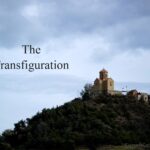
A fundamental and essential belief of Catholics is that Jesus rose from the dead after being crucified and buried.
By rising from the dead, Jesus conquered sin and death.
The major creeds of the Catholic Church proclaim Jesus’ Resurrection and state belief in the bodily resurrection of the dead when He comes again at the end of time.
Resurrection is not merely being restored to life from death. A resurrected body will never die again and is reunited with its eternal soul in Heaven or in Hell.
Baptized Catholics live in the hope of dying in God’s grace and friendship, being resurrected like Jesus, and living with Him for eternity.
A sign of divine love that comes back for us:
Catholics must believe in the bodily Resurrection:
The Resurrection invites us to a new relationship with God:
For I delivered to you as of first importance what I also received, that Christ died for our sins in accordance with the Scriptures, that He was buried, that He was raised on the third day in accordance with the Scriptures, and that He appeared to Cephas, then to the twelve. Then He appeared to more than five hundred brethren at one time, most of whom are still alive, though some have fallen asleep. Then He appeared to James, then to all the Apostles. Last of all, as to one untimely born, He appeared also to me.
1 Corinthians 15: 3-8
The Resurrection of Jesus is not a bland myth:
There are a good reasons to believe in the Resurrection:
“Why do you seek the living among the dead? He is not here, but has risen.” The first element we encounter in the framework of the Easter events is the empty tomb. In itself it is not a direct proof of Resurrection; the absence of Christ’s body from the tomb could be explained otherwise. Nonetheless the empty tomb was still an essential sign for all. Its discovery by the disciples was the first step toward recognizing the very fact of the Resurrection. This was the case, first with the holy women, and then with Peter. The disciple “whom Jesus loved” affirmed that when he entered the empty tomb and discovered “the linen cloths lying there”, “he saw and believed”. This suggests that he realized from the empty tomb’s condition that the absence of Jesus’ body could not have been of human doing and that Jesus had not simply returned to earthly life as had been the case with Lazarus.
Catechism of the Catholic Church 640
The Apostles expected to find a body:
We know that the tomb was empty:
The empty tomb is a significant sign:
The reality that “He is not here.”:
Christ’s Resurrection is the strength, the secret of Christianity. It is not a question of mythology or of mere symbolism, but of a concrete event. It is confirmed by sure and convincing proofs. The acceptance of this truth, although the fruit of the Holy Spirit’s grace, rests at the same time on a solid historical base. On the threshold of the third millennium, the new effort of evangelization can begin only from a renewed experience of this Mystery, accepted in faith and witnessed to in life.
Pope John Paul II, Regina Caeli, 21 April 1996
We will be fully alive when our bodies are resurrected:
The Truth, Goodness, and Beauty of the Catholic Church
Jesus shares our human story:
Share this page with friends and family to start a conversation about your faith.
Don’t miss a post. Learn more about the Catholic Church and strengthen your Catholic faith.
Find more Fiercely Catholic video issues here.
Subscribe here.


